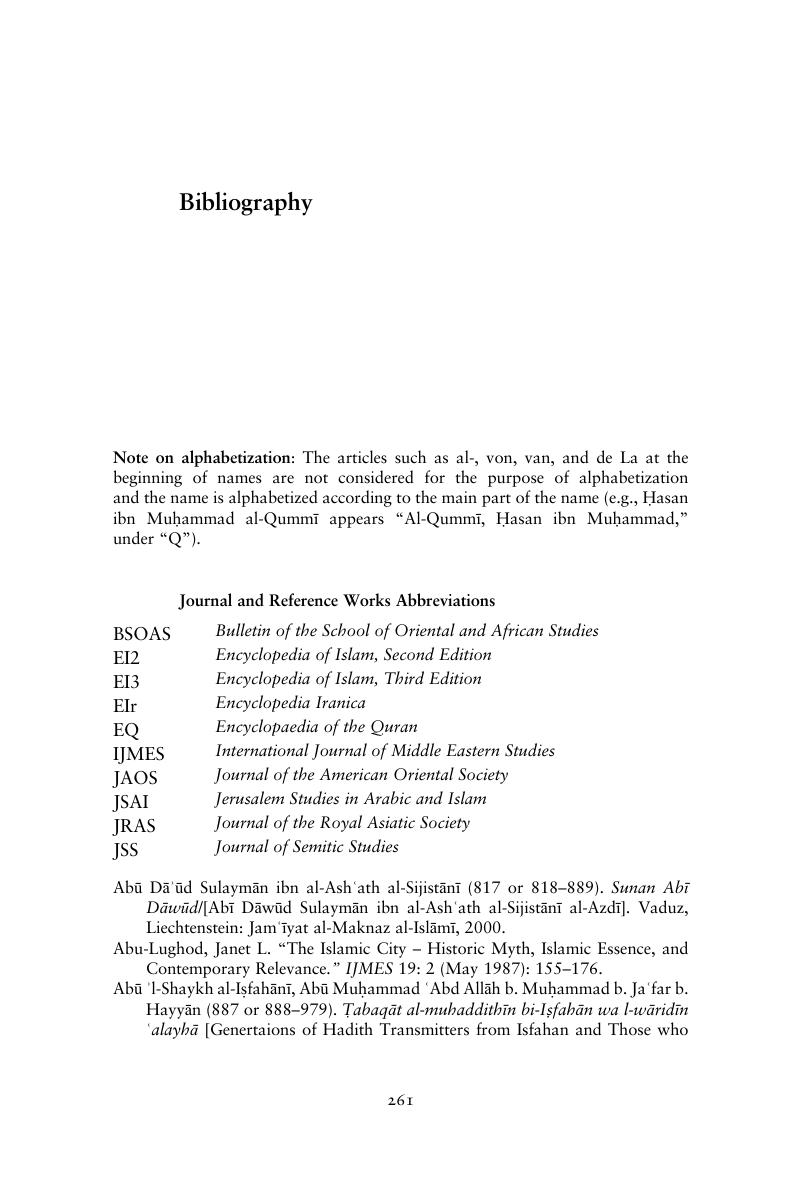Book contents
- Authority and Identity in Medieval Islamic Historiography
- Cambridge Studies in Islamic Civilization
- Authority and Identity in Medieval Islamic Historiography
- Copyright page
- Dedication
- Contents
- Preface
- Acknowledgments
- Journal and Reference Works Abbreviations
- 1 Introduction
- 2 Methodologies for Reading Hybrid Identities and Imagined Histories
- 3 Contexts and Authorship
- 4 Dreaming of the Prophet
- 5 Holy Bloodlines, Prophetic Utterances, and Taxonomies of Belonging
- 6 Living Virtues of the Land
- 7 Sacred Bodies and Sanctified Cities
- 8 Prophetic Etymologies and Sacred Spaces
- 9 The View from Anatolia
- 10 Lessons from the Peripheries
- Bibliography
- Index
- Series page
- References
Bibliography
Published online by Cambridge University Press: 05 August 2016
- Authority and Identity in Medieval Islamic Historiography
- Cambridge Studies in Islamic Civilization
- Authority and Identity in Medieval Islamic Historiography
- Copyright page
- Dedication
- Contents
- Preface
- Acknowledgments
- Journal and Reference Works Abbreviations
- 1 Introduction
- 2 Methodologies for Reading Hybrid Identities and Imagined Histories
- 3 Contexts and Authorship
- 4 Dreaming of the Prophet
- 5 Holy Bloodlines, Prophetic Utterances, and Taxonomies of Belonging
- 6 Living Virtues of the Land
- 7 Sacred Bodies and Sanctified Cities
- 8 Prophetic Etymologies and Sacred Spaces
- 9 The View from Anatolia
- 10 Lessons from the Peripheries
- Bibliography
- Index
- Series page
- References
Summary

- Type
- Chapter
- Information
- Authority and Identity in Medieval Islamic HistoriographyPersian Histories from the Peripheries, pp. 261 - 296Publisher: Cambridge University PressPrint publication year: 2016
References
Bibliography
Note on alphabetization: The articles such as al-, von, van, and de La at the beginning of names are not considered for the purpose of alphabetization and the name is alphabetized according to the main part of the name (e.g., Ḥasan ibn Muḥammad al-Qummī appears “Al-Qummī, Ḥasan ibn Muḥammad,” under “Q”).
Bulletin of the School of Oriental and African Studies
Encyclopedia of Islam, Second Edition
Encyclopedia of Islam, Third Edition
Encyclopedia Iranica
Encyclopaedia of the Quran
International Journal of Middle Eastern Studies
Journal of the American Oriental Society
Jerusalem Studies in Arabic and Islam
Journal of the Royal Asiatic Society
Journal of Semitic Studies

